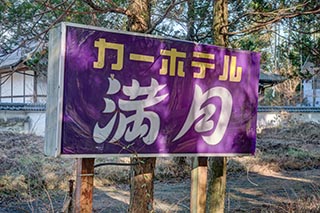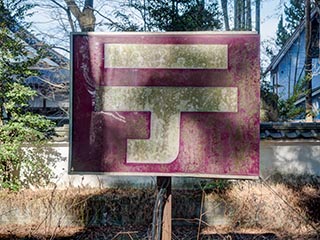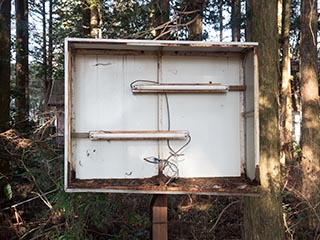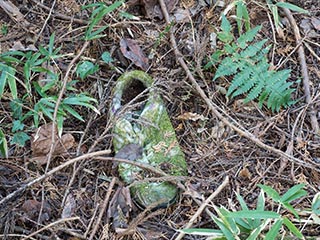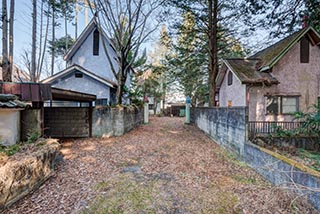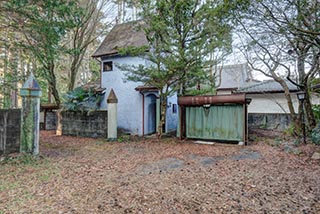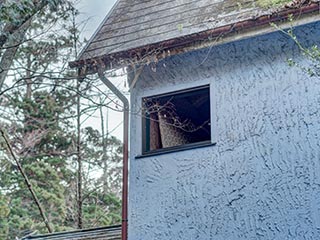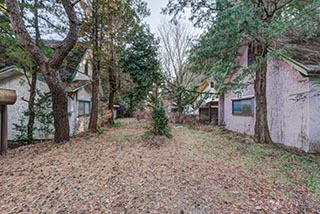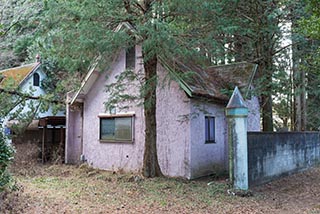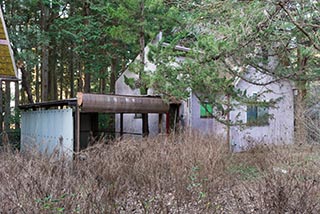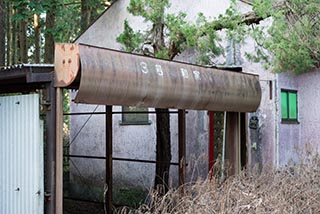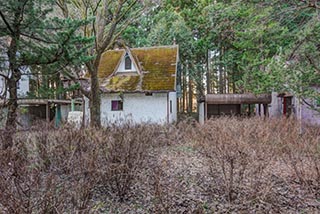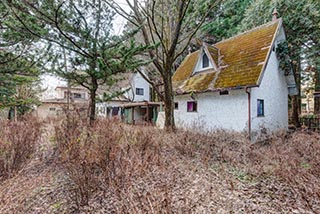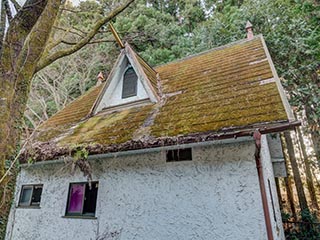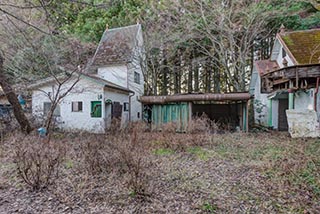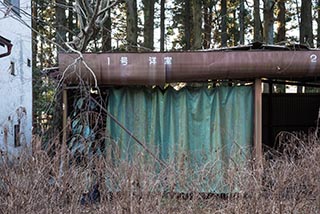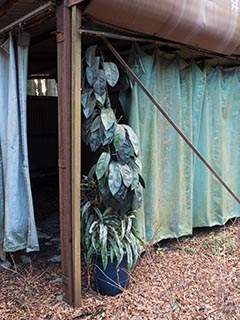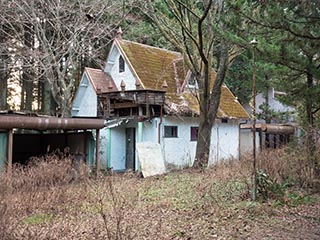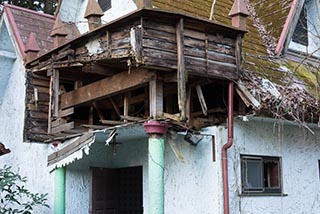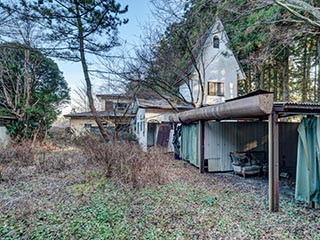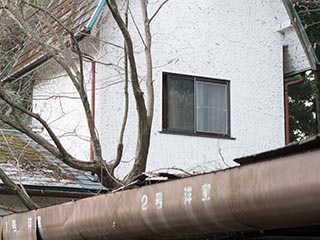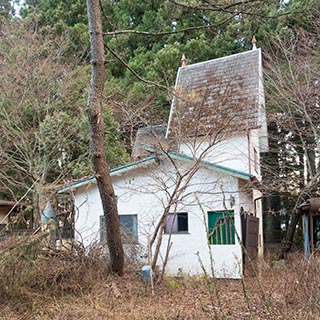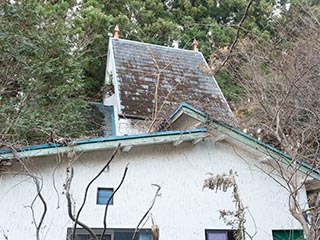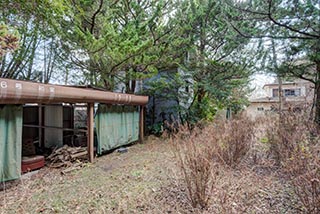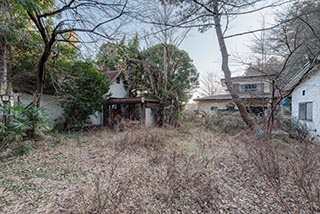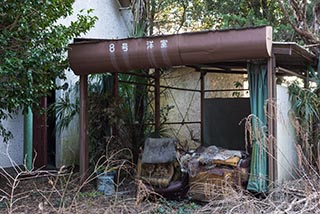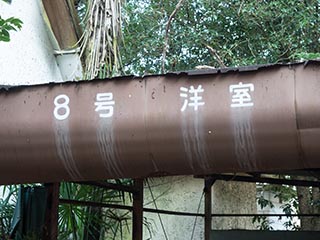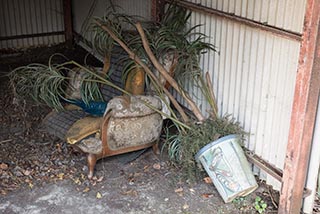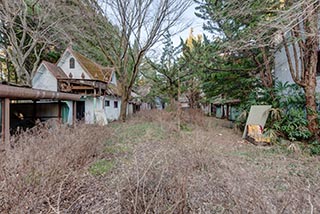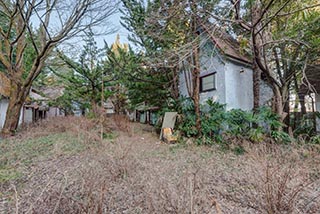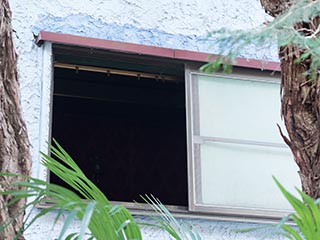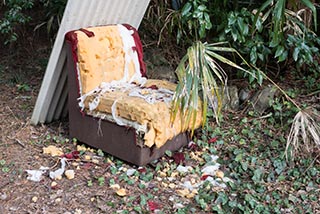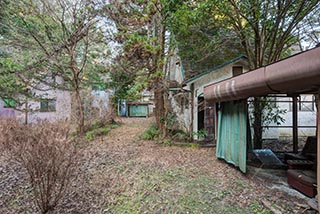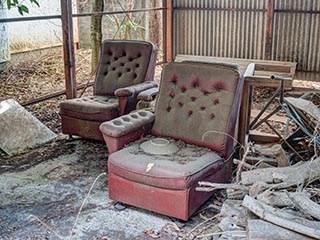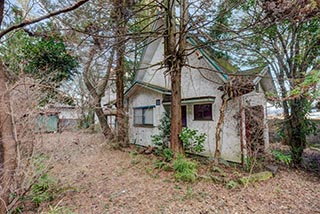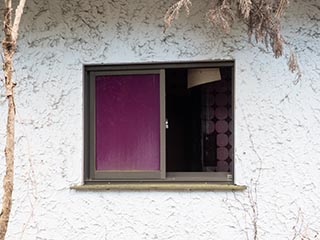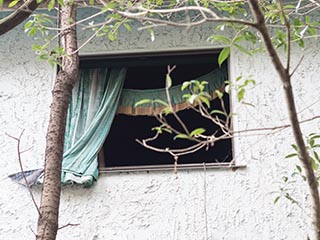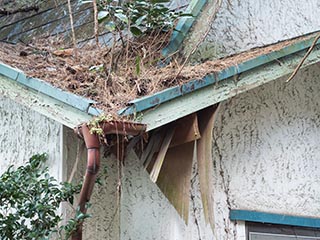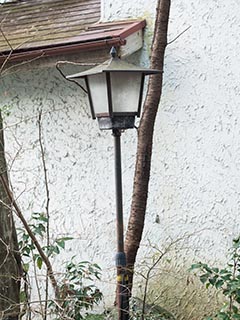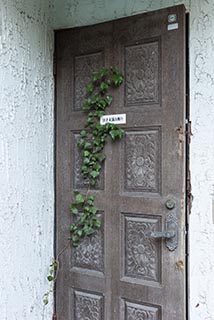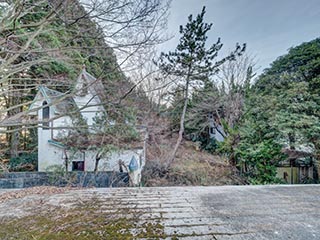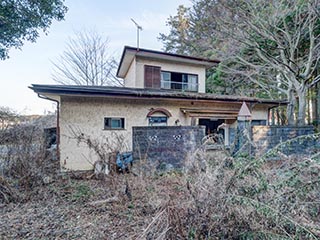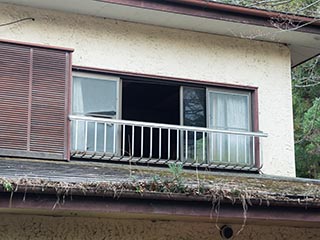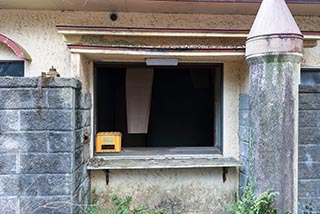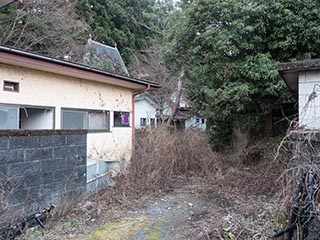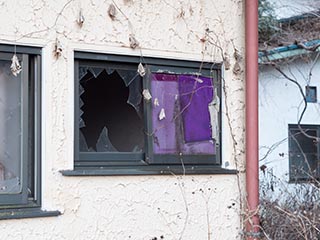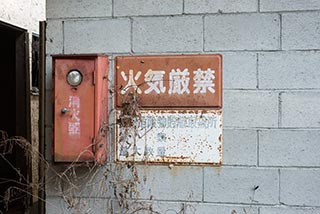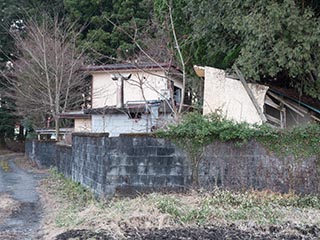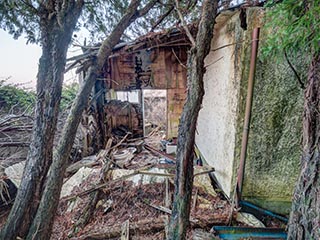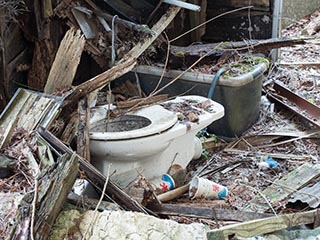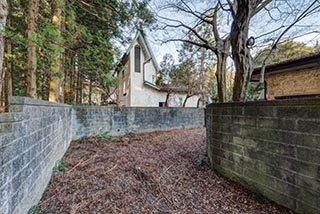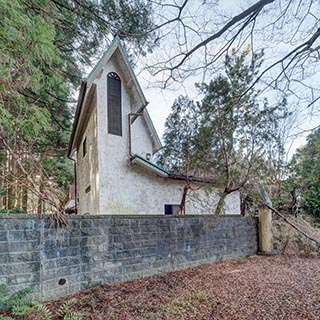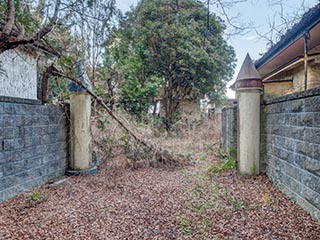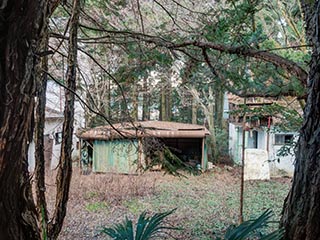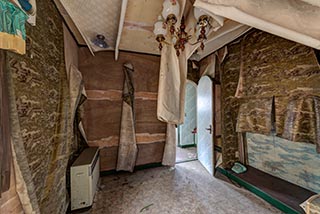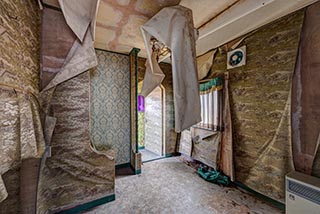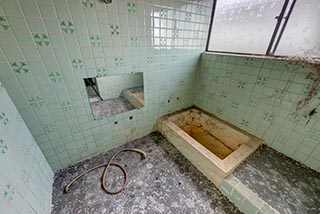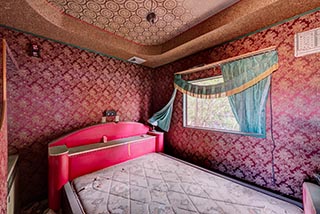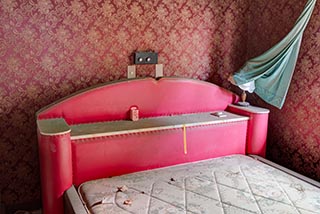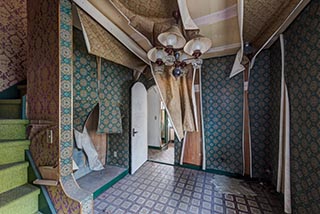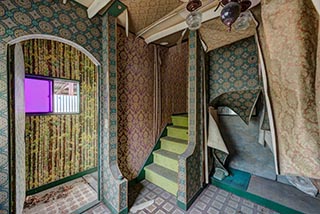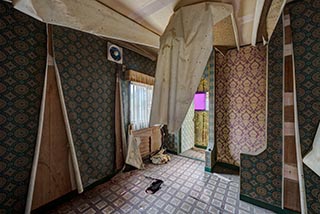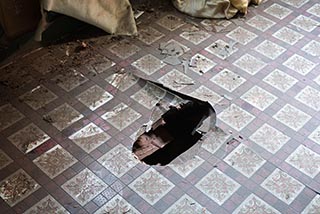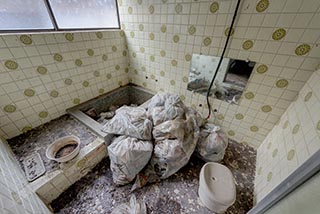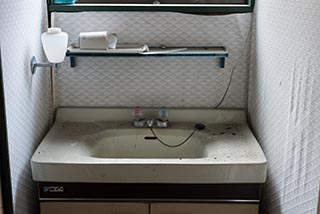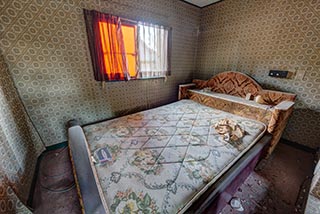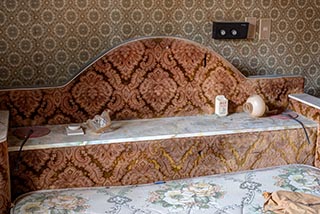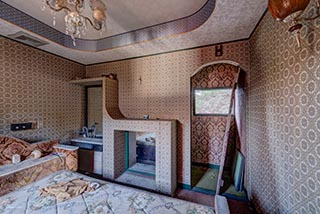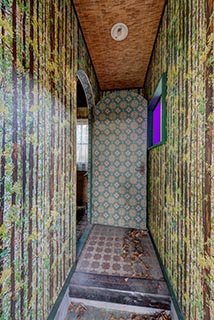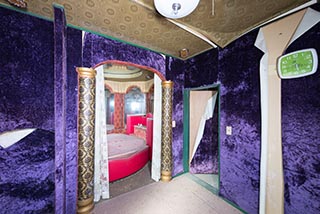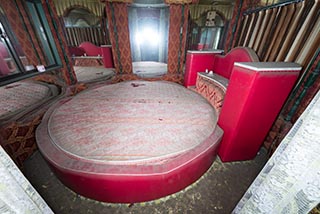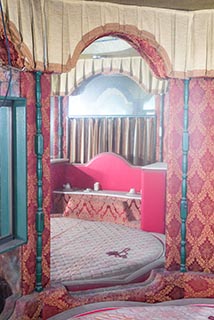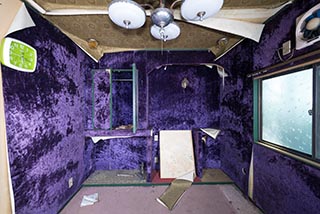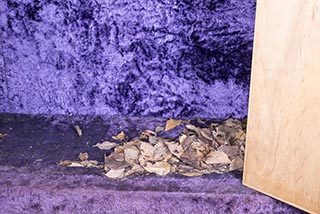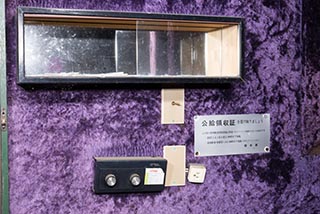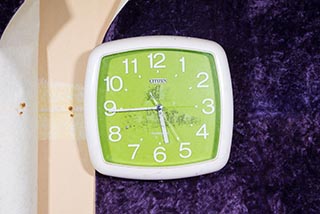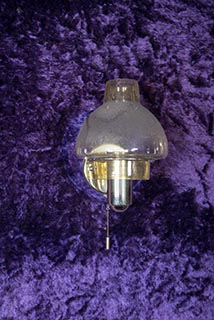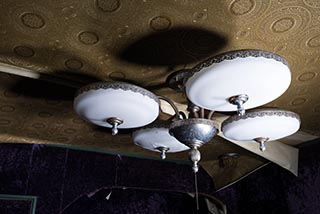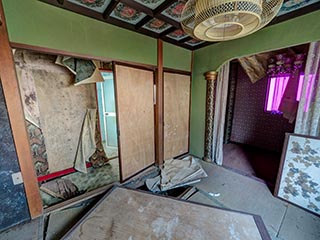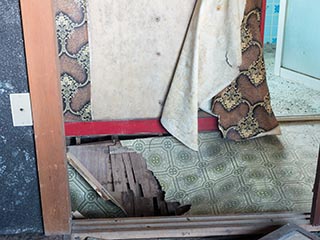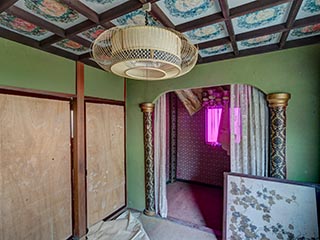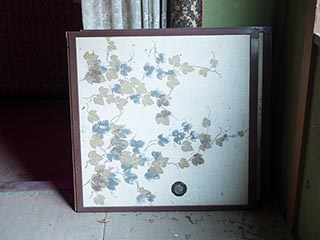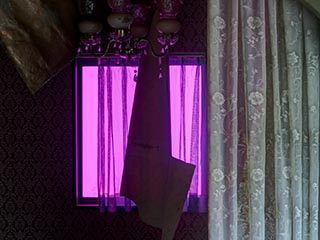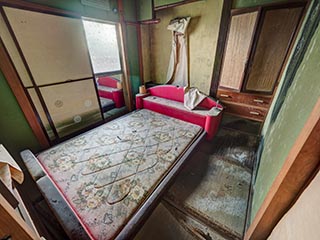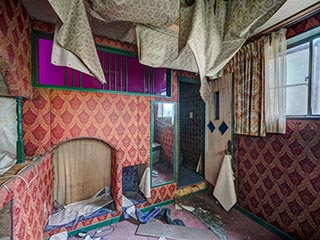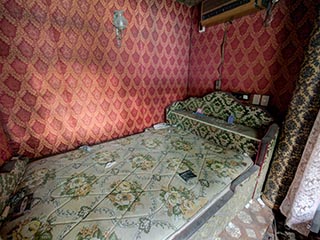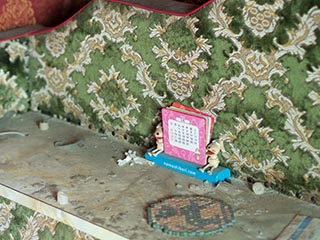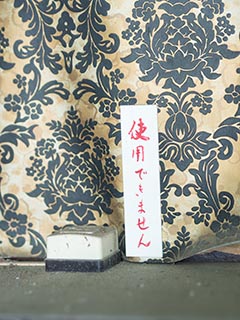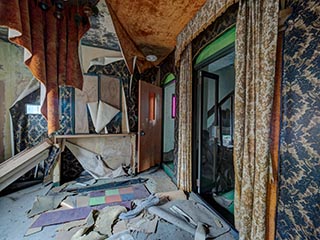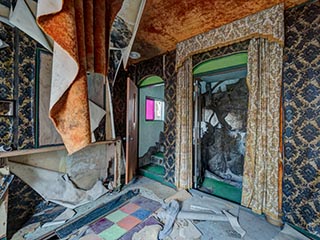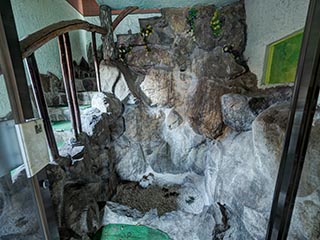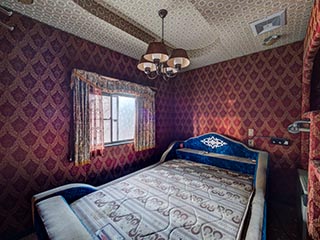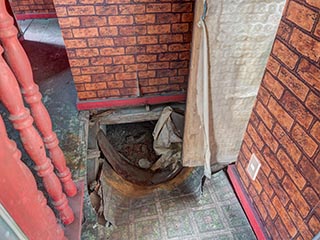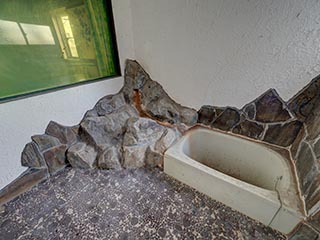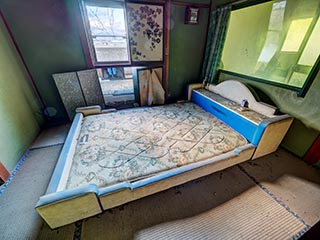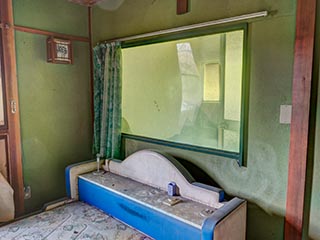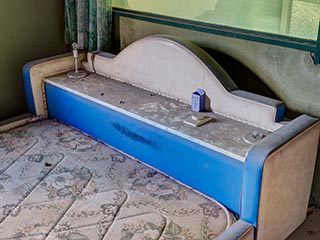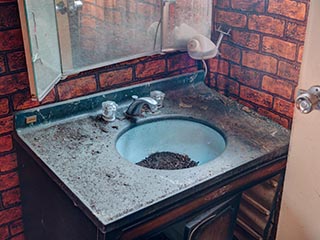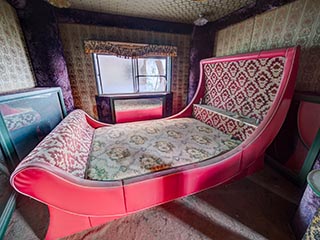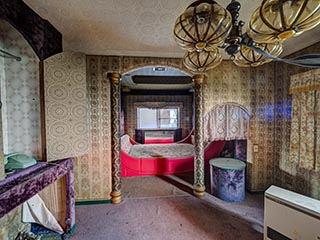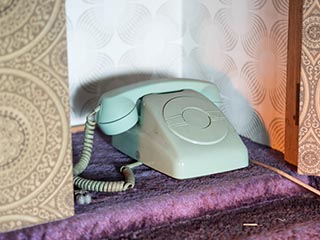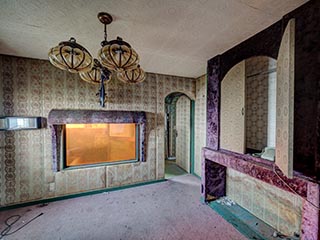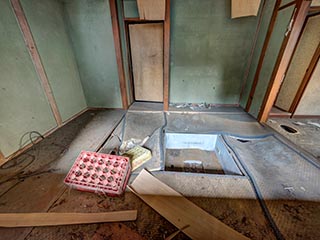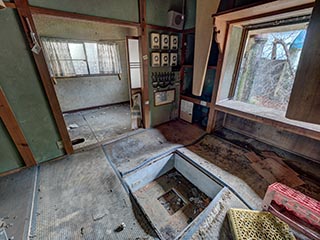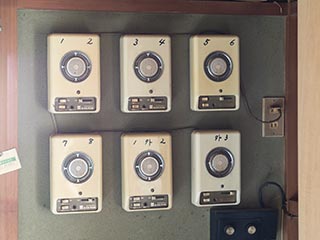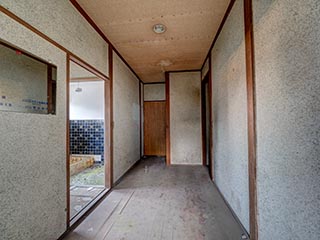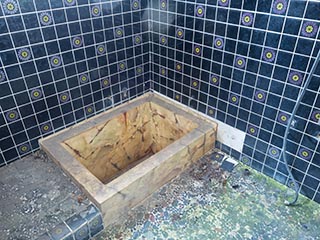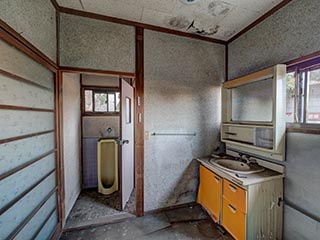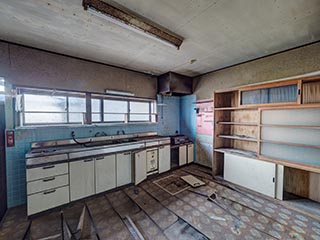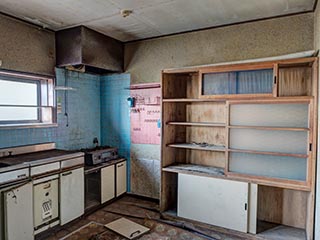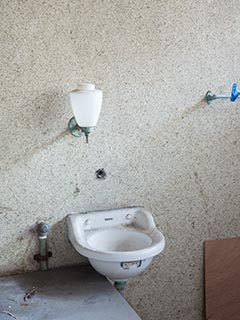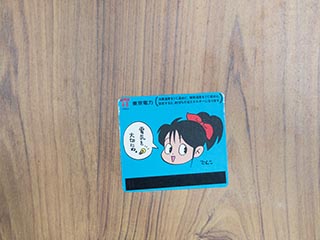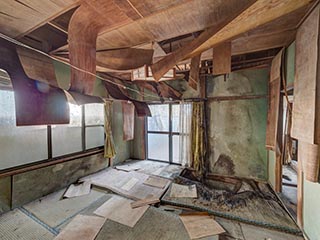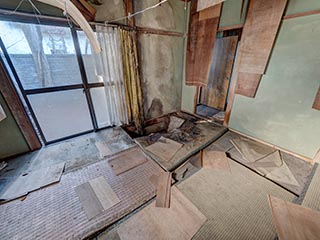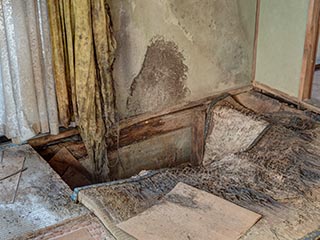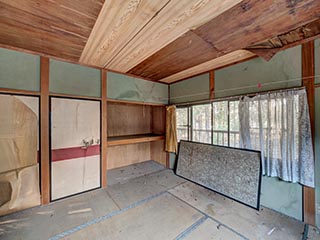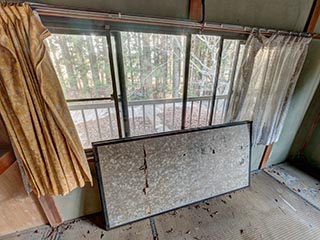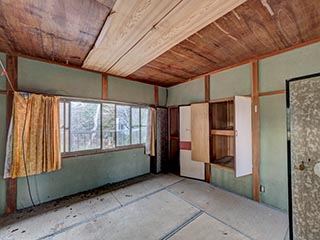The Car Hotel Mangetsu (Japanese for full moon) was a love hotel in the outskirts of Nikko, Tochigi Prefecture. I read about it on a Japanese website and explored it in January 2016. The Mangetsu was next to a wooded lane, which ran alongside a larger road. It appeared to be the only love hotel in the immediate area. There was a fancy Japanese-style building next door, which had apparently also been disused for some time. I didn't pay much attention to this building and don't know what it was.
The Mangetsu followed one of the standard layouts for rural love hotels, with eight cottages spread around a central courtyard. Each cottage had its own carport, with a curtain to hide the car for privacy. The courtyard was predictably overgrown after years of abandonment.
A building at one end of the courtyard contained the office and the manager's accommodation. At small love hotels like the Mangetsu I think the manager usually lives on the premises.
Most of the cottages were two storey, although the upper storeys were just big enough to contain the bed. The décor was amongst the gaudiest that I've seen in a love hotel. One room had walls completely covered in furry purple wallpaper, which was perhaps stretching the limits of good taste. The Mangetsu reminded me of the Hotel Don Quixote, except that the Mangetsu didn't feature rotating beds. One single-storey cottage did have a circular bed, but it didn't look like it could have rotated.
I found a small calendar in one of the bedrooms, which was open to March 2005. I presume that the hotel closed around that time. The cottages were still moderately well preserved, with most of the roofs and windows intact. However, some of the windows had been left open, allowing rainwater to enter, and moisture was already taking its toll. Wallpaper was peeling from the walls and ceilings, and the downstairs floors were heavily decayed and had collapsed in places. From what I've seen, the ground floors of Japanese buildings are the first part to collapse. They're usually not overly strong to begin with, and being close to the ground they're especially vulnerable to dampness and decay.
I was walking across the seemingly intact sitting room floor of one of the cottages, when without warning one of my feet went straight through the plywood with a loud crack. My foot only dropped about 30 centimetres before it hit the ground below, and I was wearing steel capped work boots, so I was completely unhurt. It was however a reminder that exploring abandoned buildings is not without its dangers.
Fortunately I didn't see any evidence of decay in the wall frames or upper floors, so I was able to photograph the upstairs bedrooms in relative safety.
The beds had all been left in place, but the sheets had been stripped. The other furniture and most of the fittings had been removed. The cottages were virtually untouched by vandals, although as usual most of the bathroom fittings had been stolen by scrap metal hunters. The cottages were also surprisingly free of litter, except for some large bags of garbage piled in one of the bathrooms.
The ground floor of the manager's house was decayed and collapsing, somewhat hindering my exploration and photography. As is usually the case, the upstairs floor was in much better condition and felt solid underfoot.
The furniture and virtually all the personal belongings had been removed from the house, so there wasn't much to see. About the most interesting thing remaining was the intercom that once communicated with the cottages.
